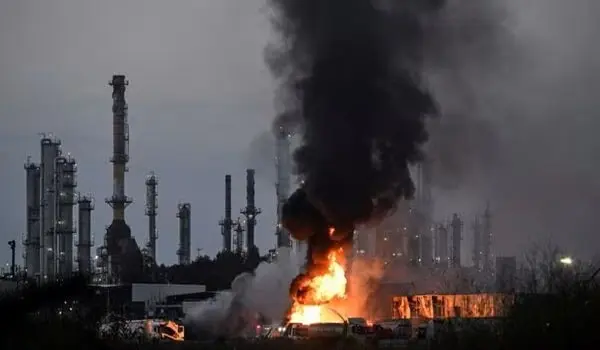On June 21–22, 2025, the U.S. and Israel conducted coordinated airstrikes targeting Iran’s key nuclear facilities—Fordow, Natanz, and Isfahan—using B‑2 stealth bombers equipped with bunker‑buster munitions. Iran responded with missile and drone strikes against Israeli sites, including hospitals and airports in Haifa, Tel Aviv, and Beersheba. Iran’s Red Crescent reported no casualties at the nuclear sites, though Iran confirmed military losses from Israeli retaliations.
Strategic Dynamics
U.S. Justification & Strategy: President Trump described the operation as a ‘spectacular military success’ aimed at curbing Iran’s nuclear advances and warned of further action unless Iran dismantled key elements of its program. This marks a significant escalation, placing U.S. forces directly in the Iran–Israel conflict.
Iran’s Response: The Islamic Revolutionary Guard Corps (IRGC) deployed advanced ballistic missiles like the Kheibar Shekan to retaliate. Iranian officials stressed that the nuclear sites were vacated beforehand and claimed minimal long-term damage.
Global Repercussions: The UN Security Council convened an emergency session. Secretary‑General Guterres warned of a ‘deadly downward spiral’, urging de‑escalation. Russia, China, and several European nations strongly cautioned against further military escalation.
Economic & Energy Fallout: The strikes disrupted air travel in the Middle East and affected global markets. Oil prices surged-Brent reached roughly $77/barrel, with forecasts pushing toward $100+. Financial analysts warned of inflationary pressure and a potential drag on global GDP if the Strait of Hormuz were threatened.
Humanitarian & Regional Impact
Evacuations of foreign nationals, including Americans, are underway from Iran and Israel. Hospitals in Gaza and Israel report civilian casualties, intensifying the humanitarian crisis and widening the conflict’s footprint.
Diplomacy vs War: Despite European-led talks in Geneva, Iran demands Israel halt its attacks as a precondition while the U.S. maintains a military stance.
Market Sensitivity: Oil prices remain volatile; even a two-week delay in further U.S. involvement offered only a temporary reprieve.
Conflict Risk: With U.S. direct military action and Iran’s missile retaliation, the region teeters on the brink. Any miscalculation could spiral into a broader war.
India’s Position and Actions
Calls for De-escalation & Diplomacy
India has consistently urged all parties — Israel, Iran, and the US — to show restraint and return to diplomacy. Prime Minister Modi, during a June 22, 2025, phone call with Iranian President Pezeshkian, emphasized the urgent need for ‘de‑escalation, dialogue and diplomacy’ to restore regional peace and stability. The Ministry of External Affairs (MEA) also stated that it was ‘closely monitoring the evolving situation’.
Balanced Neutrality
India has carefully avoided taking sides. It abstained from joining the SCO’s condemnation of Israeli strikes in mid‑June 2025, reflecting a neutral posture. Historically, India has expressed ‘serious concern’ or ‘deep concern’ at escalations involving Iran and Israel, consistently calling for calm and restraint.
Evacuation of Indian Nationals (Operation Sindhu)
Security risks prompted India to launch Operation Sindhu on June 18, evacuating around 110 Indian students from Iran to safety in Armenia. The MEA and Indian embassies are in close contact with nationals across both Iran and Israel, ensuring their security.
Energy Security Strategy
With over 50% of its 4.8 million barrels/day of crude imports coming from the Middle East, India is proactively safeguarding energy supplies. Oil Minister Hardeep Singh Puri emphasized that India has diversified its oil sources, maintains buffer stocks, and is increasing imports from non-Middle East suppliers like Russia to shield against disruptions.
Strategic Diplomatic Balance
India maintains significant ties with both nations:
With Iran: There is longstanding civilizational and economic engagement, including port investment at Chabahar.
With Israel: Security cooperation continues to strengthen, with India labeling Israel a key national-security ally.
Externally, Ex‑Foreign Minister Jaishankar emphasized India’s diplomatic ability to hold relations with adversaries like Israel and Iran simultaneously, reflecting India’s pursuit of strategic equilibrium.
Summary Table
| Concern | India’s Approach |
| Conflict Escalation | Public calls for restraint, neutrality maintained |
| Nationals’ Safety | Embassies active; Operation Sindhu underway |
| Energy Security | Diversified sources, buffer stocks ensured |
| Diplomatic Relations | Balanced ties with Iran, Israel & the US |
| Regional Focus | Advocates diplomacy, not aligning with blocs |
Analysis
India is treading a delicate diplomatic path, aiming to:
Protect its citizens caught in the crossfire through proactive evacuations.
Maintain energy stability by reducing dependency on Middle East oil.
Preserve strategic partnerships with both Iran and Israel (and increasingly close ties with the US).
Avoid regional polarization by abstaining from bloc-driven condemnations and focusing on de-escalation.
This approach aligns with India’s larger foreign policy goals: strategic autonomy, diversified energy and diplomatic partnerships, and playing a stabilizing role amid global tensions.

